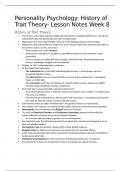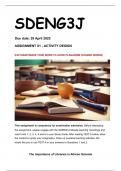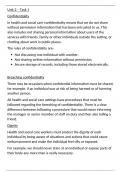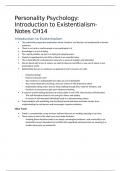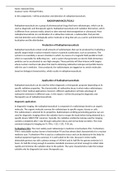CHANGING PATTERNS
SOCIOLOGY. FAMILIESRemarriage
Marriage vs Cohabitation AND HOUSEHOLDS.
and Blended Equality
Recent trends show a decline of marriages Families Changes in the law over the last one-hundred
and an increase in cohabitation. This is due years or so have made divorce easier and
Remarriage and the growth of reconstituted,
to changes within the law and social cheaper. Men and woman now have equal rights
step- or blended families is increasingly
attitudes. in divorce, for example, women can now initiate
common in today's society.
divorce.
Changes to family structure Increase in divorce
Cost
Changes in the law, social attitudes and the About one-third of marriages now involve a
growth of secularisation (the decline in the Since the introduction of legal aid, divorce has
remarriage for one or both partners. This is
importance of religion) have led to an become much cheaper, making it available to
mainly due to the increase in divorce.
alteration in the structure of the family. people who previously were unable to afford it.
Cohabitation, raising children outside Types of families
Legal changes
marriage, divorce and re-marriage are now
When those remarrying (or cohabiting) have
more common than they were only a few In 1969 divorce law was changed so that it was
children from a previous relationship, this
decades ago. no longer necessary to prove that a partner was
results in a reconstituted family (also know as
guilty of a matrimonial offence and now a
Decline in marriage step-families or blended families.)
divorce can be granted because the marriage
In the past 50 years there has been around a Reconstituted families has broken down beyond repair (known as
two-thirds decline in marriage rates as ‘irretrievable differences’).
Reconstituted families account for about 11
people are choosing to marry later in life or
to cohabit (live together). Cohabitation is
percent of all couple families with dependent Reasons for the Increase in
children. Stepfathers are more common than Divorce: Acceptability
becoming the norm with people choosing to
stepmothers because most children remain
cohabit as an alternative to marriage, as an
with the mother after a break-up. The rise in the divorce rate can be explained by
informal arrangement with a temporary or
the increase in availability and acceptability.
casual relationship or as a trial or precursor Reasons for the Increase in Divorce:
to marriage. Availability Equality
Explaining the rise in cohabitation The rise in the divorce rate can be explained Due to growing equality between men and women,
by the increase in availability and women are now less willing to accept the traditional
More economic independence that gives patriarchal nature of marriage, such as domestic
acceptability.
women more freedom to choose their labour and segregated roles. More women are now in
relationship. Higher expectations of Divorce rates paid employment, so they are less financially
relationships and the rejection of patriarchy dependent on their husbands.
(feminism). People might cohabit in order to The number of marriages ending in divorce is
about five times higher than it was fifty years Contraception
avoid risks associated with a formal marriage
agreement and the potential for divorce. The ago, with around half of new marriages today
The wider availability of safe and effective
reduction in the function of the family means ending in divorce. The UK has one of the
contraception means that it’s now safer to have
that marriage is now less of a practical highest divorce rates in Europe.
sex with more than one person during marriage,
necessity. There is now less stigma attached this weakens traditional constraints on fidelity to
, Religion The family itself has lost its function, argue Risk
functionalists as many of the functions have been
The decline in influence of religion transferred to other social institutions, such as the Why people choose LATs (Levin):
(secularisation) means that marriage has lost its NHS and the welfare state, resulting in marriage
religious significance as a sacred and spiritual o Apartners might want to avoid the risk of re-
becoming less of a practical necessity.
union so it is more easily abandoned if it fails. creating the conditions that led to the break-up of a
former relationship.
Living Apart Together
Postmodernists
Relationship (LATs) Changes in Child-Bearing
Postmodernists see the increase in divorce
as linked to growing individualisation (self- LATs are those where couples are in a long- Over the past one-hundred years or so, families
interest) and uncertainly of late modern and term relationship but choose to live in have been getting smaller.
postmodern societies. Lives are also subject separate households.
Smaller families
to greater choice, negotiation and decision- What are LATs?
making, such as over household duties and Over the past one-hundred years or so, families have
finances, so they are more likely to be LATs are unburdened by the structural been getting smaller due to:
governed by self-interest rather than commitments of married or cohabiting
relationships, such as financial commitments and o Women having fewer children.
traditional controls of morality, social
legal entanglements. Levin regards LATs as a new o Delaying having children.
expectations and norms. Giddens (a
form of family, an alternative to marriage or
postmodernist) argues that personal o Choosing to remain childless.
cohabitation which challenges the traditional
fulfilment in relationships has grown in concept of the nuclear family.
significance, so intimate relationships are no Reasons
longer based on ideas of permanence; this Growth of LATs
These changes have been caused by a number of
means that people are less likely to stay with factors including:
The growth in LATs arises through changes in
partners they see as unsatisfactory.
social norms, similar to those related to divorce,
o The changing role and independence of women.
Stigma the decline of marriage and the rise in
cohabitation. LATs conform to Giddens' ‘pure o The rising costs of raising a family.
There is less social stigma attached to divorce relationship’, based on self-interest and emotional
than there once was, and divorce is now no needs. o The growing individualisation.
longer regarded as scandalous. Ditto, lone
Why people choose LATs Female careers
parenthood, cohabitation and stepfamilies are
now widely accepted. Women now often place a greater priority on their
Levin has proposed three reasons why
career than they once did. This means that woman
Life expectancy people might actively choose LATs instead of
may delay having children until they have established
marriage or cohabitation:
The rise in the levels of life expectancy themselves in the job market or may decide to
o There may be existing responsibilities for other concentrate on their career and forego have children
means that marriages now have more time
people, such as children living at home or elderly entirely.
to break down before a partner dies.
relatives.
Cost
Functionalists
Practical reasons The Centre for Economics and Business Research
Functionalists (e.g. Parsons and Fletcher) estimate that it now costs more then £200,000 to
Why people choose LATs (Levin):
argue that the divorce rate had risen raise one child from birth until the age of 21, so many
because couples (and in particular, women) o Practical reasons: Couples (or ‘apartners’) may couples may decide that having children (or having
now demand more love, companionship, work or study in different places or may fear more children) isn’t a financially sustainable option.
understanding, compatibility and fulfilment losing memories attached to their former homes.
SOCIOLOGY. FAMILIESRemarriage
Marriage vs Cohabitation AND HOUSEHOLDS.
and Blended Equality
Recent trends show a decline of marriages Families Changes in the law over the last one-hundred
and an increase in cohabitation. This is due years or so have made divorce easier and
Remarriage and the growth of reconstituted,
to changes within the law and social cheaper. Men and woman now have equal rights
step- or blended families is increasingly
attitudes. in divorce, for example, women can now initiate
common in today's society.
divorce.
Changes to family structure Increase in divorce
Cost
Changes in the law, social attitudes and the About one-third of marriages now involve a
growth of secularisation (the decline in the Since the introduction of legal aid, divorce has
remarriage for one or both partners. This is
importance of religion) have led to an become much cheaper, making it available to
mainly due to the increase in divorce.
alteration in the structure of the family. people who previously were unable to afford it.
Cohabitation, raising children outside Types of families
Legal changes
marriage, divorce and re-marriage are now
When those remarrying (or cohabiting) have
more common than they were only a few In 1969 divorce law was changed so that it was
children from a previous relationship, this
decades ago. no longer necessary to prove that a partner was
results in a reconstituted family (also know as
guilty of a matrimonial offence and now a
Decline in marriage step-families or blended families.)
divorce can be granted because the marriage
In the past 50 years there has been around a Reconstituted families has broken down beyond repair (known as
two-thirds decline in marriage rates as ‘irretrievable differences’).
Reconstituted families account for about 11
people are choosing to marry later in life or
to cohabit (live together). Cohabitation is
percent of all couple families with dependent Reasons for the Increase in
children. Stepfathers are more common than Divorce: Acceptability
becoming the norm with people choosing to
stepmothers because most children remain
cohabit as an alternative to marriage, as an
with the mother after a break-up. The rise in the divorce rate can be explained by
informal arrangement with a temporary or
the increase in availability and acceptability.
casual relationship or as a trial or precursor Reasons for the Increase in Divorce:
to marriage. Availability Equality
Explaining the rise in cohabitation The rise in the divorce rate can be explained Due to growing equality between men and women,
by the increase in availability and women are now less willing to accept the traditional
More economic independence that gives patriarchal nature of marriage, such as domestic
acceptability.
women more freedom to choose their labour and segregated roles. More women are now in
relationship. Higher expectations of Divorce rates paid employment, so they are less financially
relationships and the rejection of patriarchy dependent on their husbands.
(feminism). People might cohabit in order to The number of marriages ending in divorce is
about five times higher than it was fifty years Contraception
avoid risks associated with a formal marriage
agreement and the potential for divorce. The ago, with around half of new marriages today
The wider availability of safe and effective
reduction in the function of the family means ending in divorce. The UK has one of the
contraception means that it’s now safer to have
that marriage is now less of a practical highest divorce rates in Europe.
sex with more than one person during marriage,
necessity. There is now less stigma attached this weakens traditional constraints on fidelity to
, Religion The family itself has lost its function, argue Risk
functionalists as many of the functions have been
The decline in influence of religion transferred to other social institutions, such as the Why people choose LATs (Levin):
(secularisation) means that marriage has lost its NHS and the welfare state, resulting in marriage
religious significance as a sacred and spiritual o Apartners might want to avoid the risk of re-
becoming less of a practical necessity.
union so it is more easily abandoned if it fails. creating the conditions that led to the break-up of a
former relationship.
Living Apart Together
Postmodernists
Relationship (LATs) Changes in Child-Bearing
Postmodernists see the increase in divorce
as linked to growing individualisation (self- LATs are those where couples are in a long- Over the past one-hundred years or so, families
interest) and uncertainly of late modern and term relationship but choose to live in have been getting smaller.
postmodern societies. Lives are also subject separate households.
Smaller families
to greater choice, negotiation and decision- What are LATs?
making, such as over household duties and Over the past one-hundred years or so, families have
finances, so they are more likely to be LATs are unburdened by the structural been getting smaller due to:
governed by self-interest rather than commitments of married or cohabiting
relationships, such as financial commitments and o Women having fewer children.
traditional controls of morality, social
legal entanglements. Levin regards LATs as a new o Delaying having children.
expectations and norms. Giddens (a
form of family, an alternative to marriage or
postmodernist) argues that personal o Choosing to remain childless.
cohabitation which challenges the traditional
fulfilment in relationships has grown in concept of the nuclear family.
significance, so intimate relationships are no Reasons
longer based on ideas of permanence; this Growth of LATs
These changes have been caused by a number of
means that people are less likely to stay with factors including:
The growth in LATs arises through changes in
partners they see as unsatisfactory.
social norms, similar to those related to divorce,
o The changing role and independence of women.
Stigma the decline of marriage and the rise in
cohabitation. LATs conform to Giddens' ‘pure o The rising costs of raising a family.
There is less social stigma attached to divorce relationship’, based on self-interest and emotional
than there once was, and divorce is now no needs. o The growing individualisation.
longer regarded as scandalous. Ditto, lone
Why people choose LATs Female careers
parenthood, cohabitation and stepfamilies are
now widely accepted. Women now often place a greater priority on their
Levin has proposed three reasons why
career than they once did. This means that woman
Life expectancy people might actively choose LATs instead of
may delay having children until they have established
marriage or cohabitation:
The rise in the levels of life expectancy themselves in the job market or may decide to
o There may be existing responsibilities for other concentrate on their career and forego have children
means that marriages now have more time
people, such as children living at home or elderly entirely.
to break down before a partner dies.
relatives.
Cost
Functionalists
Practical reasons The Centre for Economics and Business Research
Functionalists (e.g. Parsons and Fletcher) estimate that it now costs more then £200,000 to
Why people choose LATs (Levin):
argue that the divorce rate had risen raise one child from birth until the age of 21, so many
because couples (and in particular, women) o Practical reasons: Couples (or ‘apartners’) may couples may decide that having children (or having
now demand more love, companionship, work or study in different places or may fear more children) isn’t a financially sustainable option.
understanding, compatibility and fulfilment losing memories attached to their former homes.


